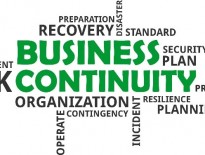Fake ISO Certificates: The Untold Truth

ISO Certification
Let’s face it, most companies start out their ISO journey because they have to. It might be because they want to apply for a big tender and having an ISO 9001 certificate would give them an edge over the competition or is indeed part of the qualification requirements to submit a bid. It is therefore understandable if such companies do not have the initial “buy-in” into the concept of quality management and perceive it as something that they have to do rather than something that they want to do. Eventually though, over time, once they implement the ISO standard in their organization, they start noticing the advantages and start buying into the concept.
However, there are a few companies out there that knowingly or unknowingly opt for a risky shortcut. Under the pressure of the tender submission deadline, they would reach out to more and more ISO consultancy firms until they find their savior. A consultancy firm that would guarantee an ISO certificate within a week for a ridiculously low price and with minimal to no impact on the ongoing operation. That my friends is a trap.
Sure, it is possible for a company to get ISO certified in a week but the probability of finding a company that already has all the ISO requirements in place and would only need a certification audit (Stage 2 audit) are slim at best. If you ever get such an offer, be careful. No matter how tempting it might be, you might be putting your company’s reputation at risk.
It does not take an expert to check if an ISO certificate is real or fake. First of all, any ISO certificate should have two logos printed on it, one for the certification body and the other for the accreditation body (the body that gives the certification body the authority to issue ISO certificates). It should also have two serial numbers printed on it. The first serial number is that of the certificate itself. It is used to check if indeed the certificate was issued by the certification body. All you have to do is visit the certification body’s website and type in the certificate’s serial number in the certificate search page. The other serial number is usually printed below the certification body’s logo. You use that to check if the certification body does indeed have the authority to issue such a certificate by visiting the accreditation body’s website and typing in that number in the certification body search. Finally, you need to check that the accreditation body is indeed part of the International Accreditation Forum (IAF). Again, all you need to do is visit the IAF website (https://iaf.nu/) and search for the accreditation body in the members section. So all you need to check if a certification body is real or fake is ten minutes on a computer and an internet connection.
Aside from putting your company’s reputation on the line, opting for a “dodgy” ISO certificate would deny your company the advantages of the quality management systems provided by ISO standards. Implementing a quality management system in a company may be challenging at first but is actually quite logical and becomes second nature later on. Being required to have an ISO certificate to apply for a tender should be taken as an opportunity to upgrade the level of quality within the company rather than a disturbing challenge. It should signal that your company has grown and is now expected to have a certain level of quality to abide to. In my humble opinion, that is something that should be celebrated.
If you need help in getting an ISO certificate to apply for a tender or otherwise, feel free to contact us at any time https://www.haconsultancies.com/book-a-meeting/






Leave a Reply
Want to join the discussion?Feel free to contribute!